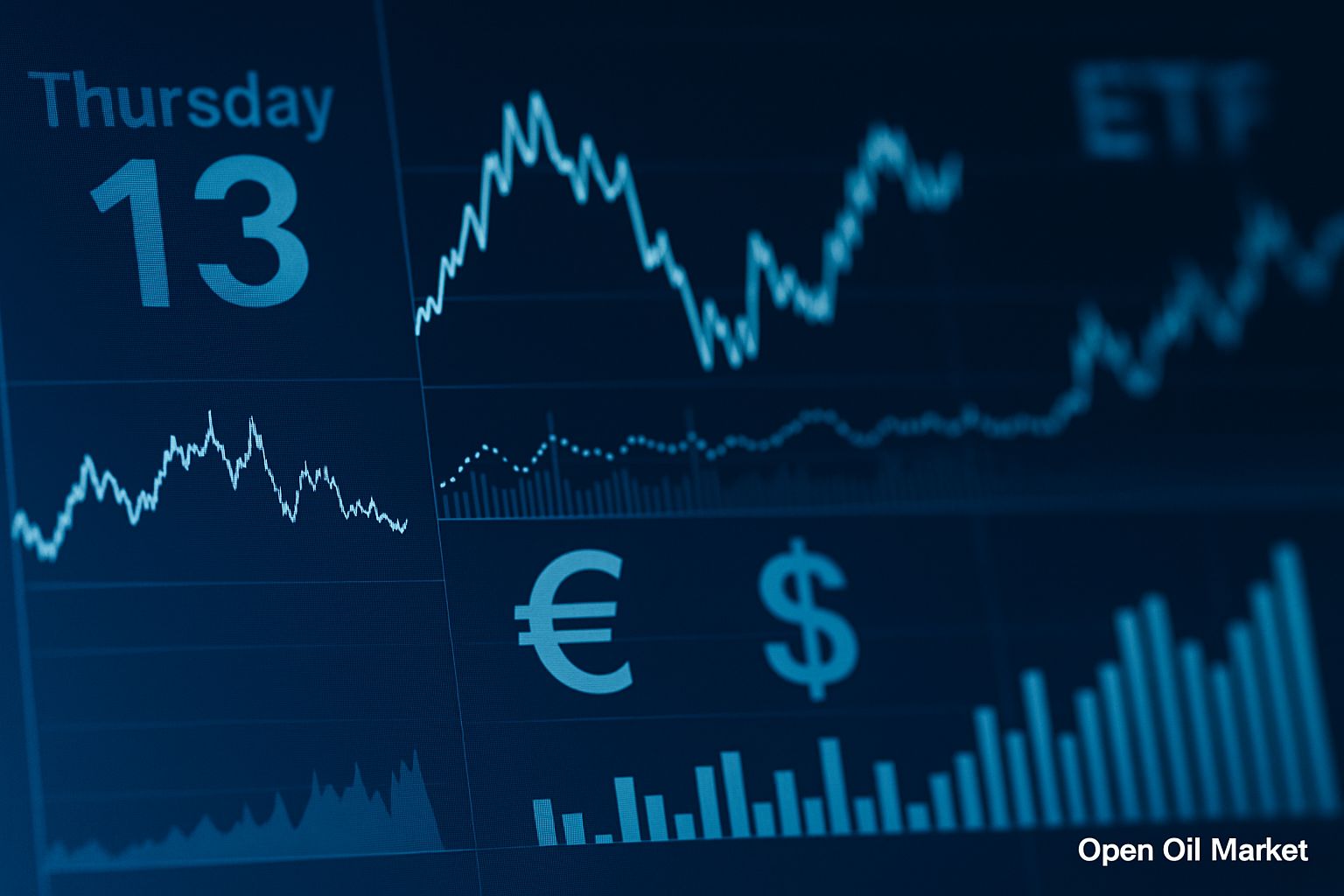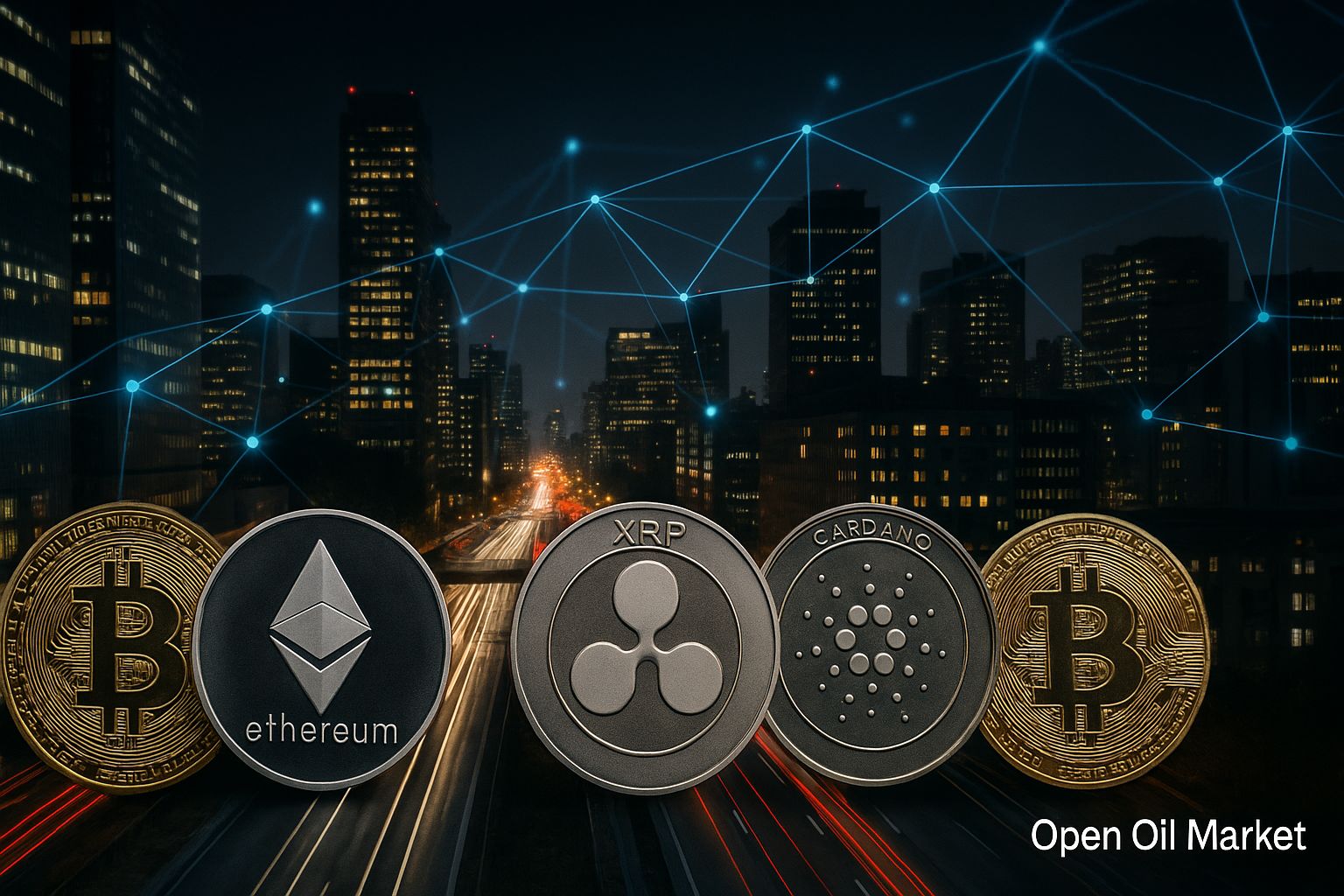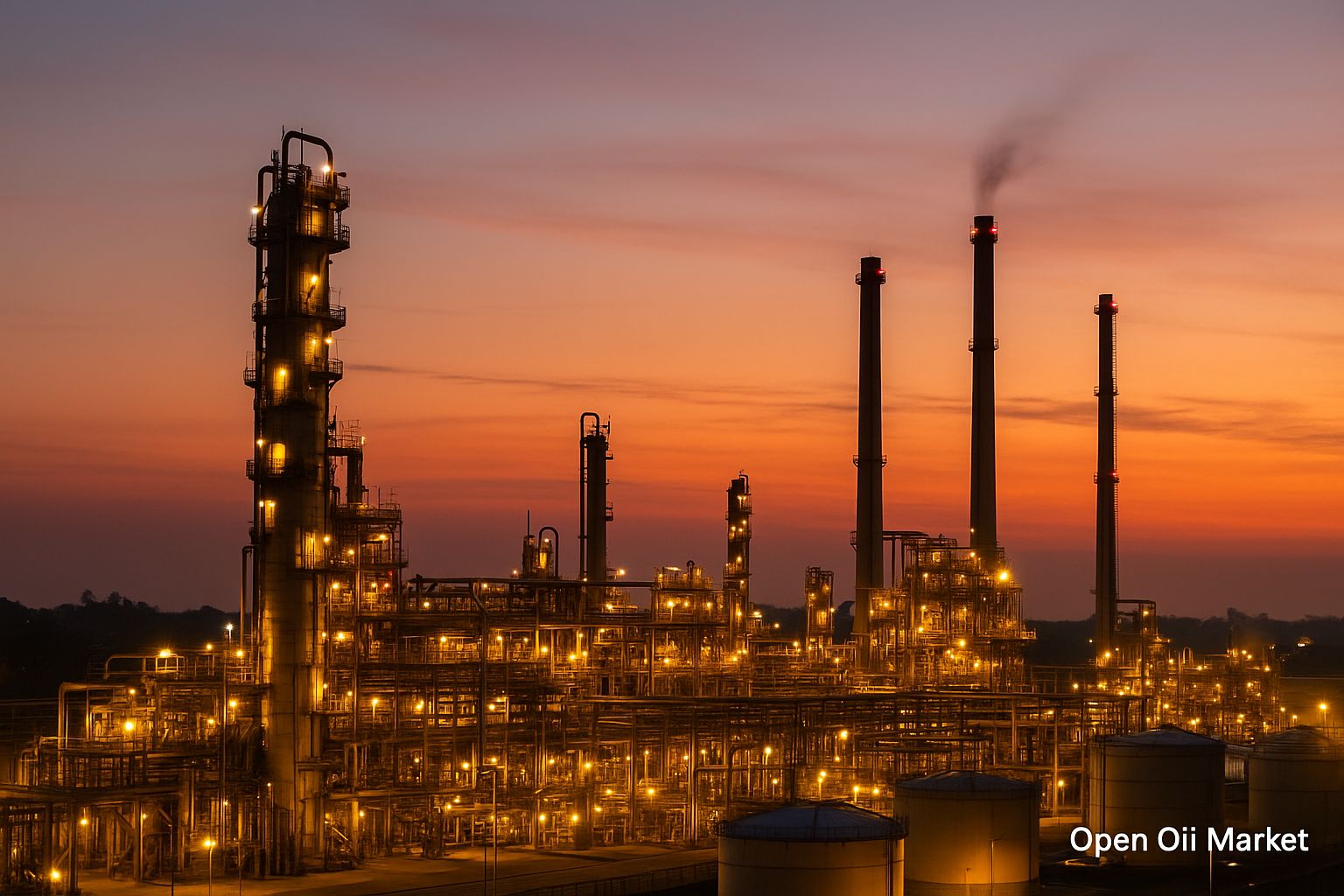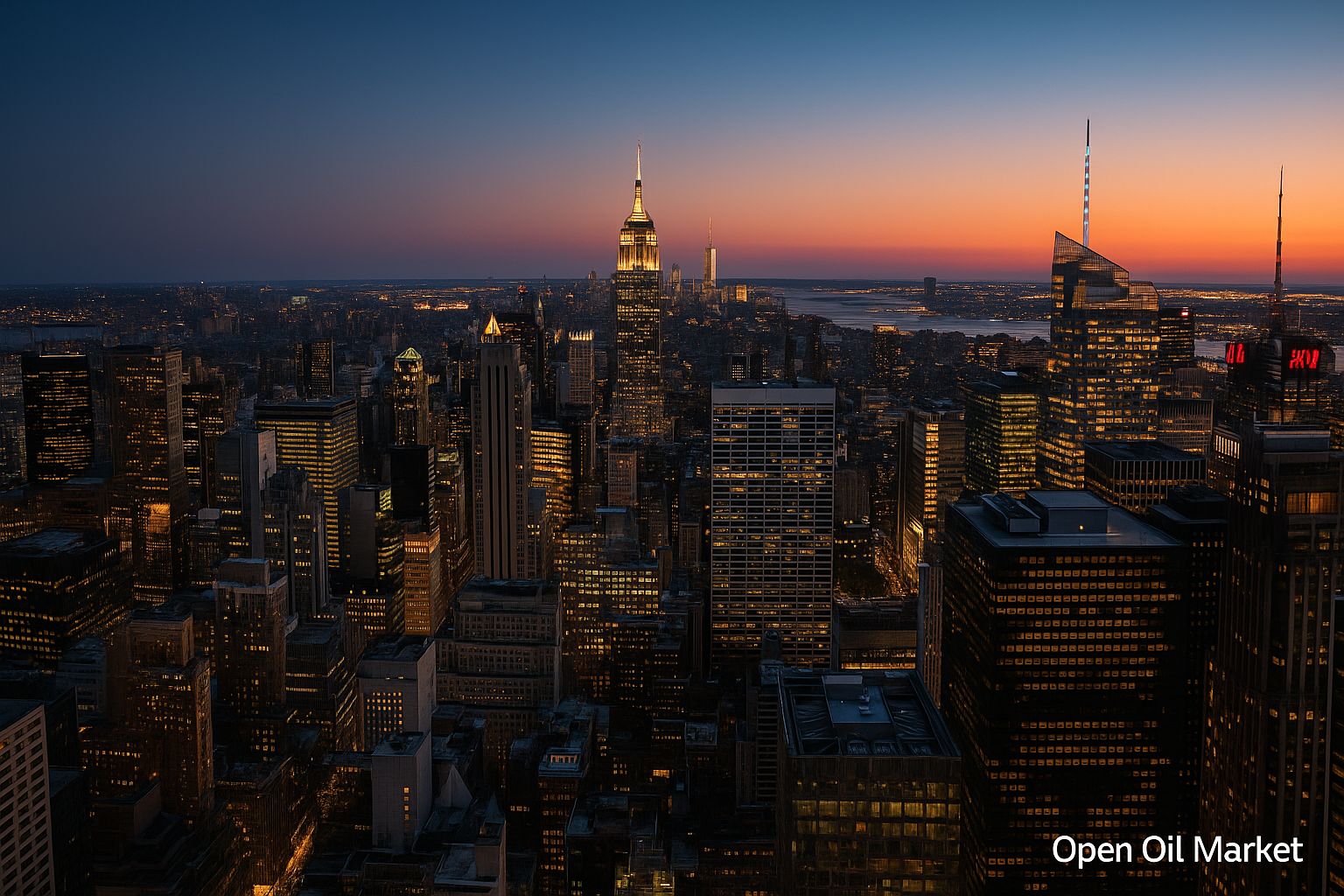
Global Fuel and Energy Sector News as of 23 October 2025: Brent Oil Recovers Above $60 per Barrel, Record Gas Stocks in Europe, and Increased Investments in Renewable Energy. Analysis of Key Trends in the Energy Sector for Investors and Companies.
As of 23 October 2025, the global fuel and energy sector is characterised by a combination of intense geopolitical confrontation and relative stability in the raw materials markets. The sanctions conflict between Russia and the West shows no signs of abating, with Western nations continuing to impose further restrictions. This week, the UK introduced additional sanctions against major Russian oil and gas companies, while the European Union approved a phased cessation of Russian gas imports by 2026, with discussions underway regarding a complete ban on oil supplies by 2028. An unexpected factor has been India's position; under pressure from partners, New Delhi has expressed a willingness to gradually reduce purchases of Russian oil, which could potentially redistribute global oil flows in the future.
At the same time, raw material markets are showing moderately calm dynamics. Oil prices remain close to multi-month lows due to an anticipated supply surplus by the end of the year: Brent has recovered above the $60 per barrel mark (around $62), while WTI is trading at $57-59—approximately 10% cheaper than a month ago. The gas market is approaching winter with record fuel stocks in Europe, ensuring a high level of energy security and a comfortable outlook for consumers (unless extreme cold brings about unforeseen changes). The global energy transition continues to accelerate, with investments in renewable energy breaking records, although traditional resources—oil, gas, and coal—remain the foundation of energy supply.
In Russia, emergency measures to stabilise the domestic fuel market are yielding results. The fuel shortage is gradually being resolved, wholesale prices have retreated from peak levels, although remote regions still require attention. At the recent International Forum "Russian Energy Week 2025" (Moscow, 15–17 October), one of the main topics was ensuring the domestic market is supplied with energy resources and the reorientation of exports under the new sanctions conditions. Below is an overview of current events and trends in the oil, gas, electric power, coal, and other segments of the energy sector as of the current date.
Oil Market: Oversupply and Cautious Price Growth
Global oil prices have remained at low levels since the beginning of summer, although a slight recovery has been observed in recent days. After a brief rally in September, the market turned down once again, with Brent dipping to the psychological level of $60 per barrel. Current quotes have slightly bounced back from the lows, trading around $62, but are generally about 10% cheaper than a month ago. Fundamental factors indicate a growing oversupply of crude oil, although certain geopolitical moves are temporarily supporting the market.
- Production is rising, demand is slowing. OPEC+ countries and other producers are increasing output, while global demand growth is slowing. The oil alliance will raise its total quota by approximately +130,000 barrels per day starting in November; outside of OPEC, the US and Brazil are close to record levels of production. The International Energy Agency has lowered its forecast for oil consumption growth in 2025 to approximately +0.7 million barrels per day (in 2023, demand rose by more than 2 million). Slowing economies in Europe and China, the effects of previously high prices, and trade tensions (renewed disputes between the US and China) are all hampering consumption growth. As a result, commercial oil stocks worldwide are increasing, exerting upward pressure on prices.
- Sanctions and supporting factors. The tightening of sanctions against Russia maintains a degree of uncertainty in the market. Discussions concerning a complete embargo on Russian oil and a halt to "shadow" exports via tanker fleets are ongoing. Concurrently, a potential agreement between the US and India is anticipated, involving a reduction in Indian imports of Russian oil—losing the Indian market would significantly impact Russian exports, although global flows are likely to be restructured through other suppliers. Some support for prices has come from US plans to replenish strategic oil reserves (purchasing ~3 million barrels by early 2026) and relatively low fuel stocks in the US. Thus, the Brent mark around $60 serves as a kind of "floor" for the market: the oversupply prevents prices from rising significantly, but geopolitical risks and actions from major players keep quotes from plunging well below this level.
Therefore, the oil market balances between the pressure of fundamental factors and political influences. The oversupply keeps prices low, yet the sanctions confrontation and potential market rearrangements (such as a reduction in Indian purchases of Russian oil) prevent quotes from crashing further. Over the coming months, relatively low oil prices are expected to persist unless new shocks occur.
Natural Gas: Record Stocks and Export Reorientation
The gas market is entering the winter season in a favourable position. European countries have amassed record volumes of gas, while Russia is reorienting its exports eastward after losing the European direction. As a result, gas prices remain relatively low, although further stability will largely depend on winter weather conditions.
- Europe is ready for winter. Underground gas storage (UGS) facilities in the EU are over 95% full, which is 5–7 percentage points higher than last year. A warm autumn and high liquefied natural gas (LNG) import volumes have allowed Europeans to build up a solid fuel reserve in advance without panic buying. Wholesale gas prices have stabilised around €30–35 per MWh, significantly lower than peak values from autumn 2022. The risk of repeating last year's gas crisis has significantly decreased, although much depends on how cold the upcoming winter will be and whether there will be disruptions to LNG supplies.
- Exports to the east. Russia, having lost a significant portion of the European market, is increasing gas supplies towards Asia. The export volume through the Power of Siberia pipeline to China is expected to reach a record level (approximately 22 billion cubic metres of gas by the end of 2025), while discussions are ongoing regarding the construction of a second line through Mongolia ("Power of Siberia 2") to partially replace lost volumes. Additionally, new liquefaction capacities have come online in Yamal and the Far East, with additional consignments of Russian LNG being sent to India, China, Bangladesh, and other Asian countries at competitive prices. Nonetheless, total gas exports from Russia are currently still below pre-sanction levels—ensuring the domestic market and meeting the demands of CIS allies is now a priority for Russian authorities.
Overall, the global gas sector is approaching winter with a solid buffer. The European market possesses an unprecedented safety net in case of cold weather, and global gas flows have already adjusted to new realities: the EU has almost completely ceased imports of Russian gas, while Russia has significantly strengthened its positions in Asia. Unless there are extreme weather anomalies or other unforeseen circumstances, gas prices over the winter are likely to remain comfortable for consumers.
Electric Power: Consumption Growth and Network Modernisation
Global electricity consumption in 2025 is confidently moving towards an all-time high, exceeding 30,000 TWh of generation annually. The largest economies—the USA and China—are demonstrating record electricity production volumes, while many developing countries in Asia, Africa, and the Middle East are experiencing rapid demand growth driven by industrialisation and population increases. Such consumption growth presents new challenges for energy infrastructure.
- Pressure on networks. Increased electricity consumption requires massive infrastructure modernisation of power grids and generating capacities. In the USA, utility companies are investing billions of dollars to upgrade distribution networks, taking into account rising loads from data centres and electric vehicles. Similar energy network enhancement programmes are being implemented in Europe, China, India, and other countries. Simultaneously, "smart" grids and energy storage systems are being deployed: industrial battery farms and pumped storage plants are helping to smooth out load peaks and integrate uneven renewable generation. Without forward-looking investments in infrastructure, energy systems will struggle to reliably meet demand and avoid outages.
Overall, the electric power sector is currently managing to meet the energy needs of the economy, even at record consumption levels. However, maintaining the reliability of energy systems requires continuous investments in networks, generating capacities, and innovations. Many governments view electric power as a strategic sector and are increasing investments in its development, as the stability of electricity supply is crucial for the functioning of all other sectors of the economy.
Renewable Energy: Investment Boom and Growth Challenges
The renewable sector continues to gain momentum, strengthening the global "green" transition trend. In 2025, record new solar and wind power capacities are expected, driven by massive government incentives in leading economies. At the same time, the rapid growth of renewable energy is accompanied by a number of challenges, and traditional energy resources still underpin global energy supply.
- Record generation and share of renewables. Approximately 30% of all electricity globally in 2025 will be generated from renewable sources—this is a record share. In the EU, net generation already exceeds 45% of the energy balance, and in China, it approaches 30%. For the first time globally, electricity generation from solar and wind has surpassed coal generation, marking an important milestone for the industry.
- Government support and incentives. Governments are actively encouraging the development of renewables. In Europe, tougher climate goals are being adopted that require accelerated introduction of clean capacities and expansion of emissions trading. In the USA, a massive package of subsidies and tax incentives for "green" energy and related sectors is being implemented (initiatives under the Inflation Reduction Act). In the CIS countries, renewable energy is also being promoted: Russia and Kazakhstan are conducting tenders for the construction of solar and wind farms with government support, while Uzbekistan is building large solar farms in the deserts. Such measures reduce industry costs and attract investments, accelerating the transition to clean energy.
- Development challenges. The rapid growth of renewable energy is also faced with issues. High demand for equipment and raw materials is driving up costs: polysilicon for solar panels remains expensive, as do rare earth metals for turbines and batteries. Energy systems face the challenge of integrating intermittent generation—new energy storage and backup capacities are required to balance the grid. In some regions, there is a shortage of skilled labour and insufficient grid capacity to accommodate new renewable energy capacities. Regulators and companies need to address these issues to maintain high growth rates in the transition without compromising energy supply reliability.
Despite the challenges, renewable energy is attracting massive investments and has become an integral part of the global energy balance. As technologies become cheaper, the proportion of clean energy will continue to grow, while innovations (such as higher-capacity batteries and hydrogen technologies) open up new opportunities for the industry. For investors, the renewable energy segment remains one of the most dynamic growth areas, although it is important to consider market risks associated with regulation, material supplies, and infrastructure constraints when implementing projects.
Coal Market: High Asian Demand and Global Coal Phase-Out
In 2025, the global coal sector is displaying contradictory trends. In Asia, demand for coal for electricity generation during peak periods remains high, while developed countries are accelerating their exit from this fuel for environmental reasons. In Eastern Asia, a surge in coal imports was observed during the summer: for instance, in August, China, Japan, and South Korea collectively imported nearly 20% more coal than in July. This increase was driven by heightened energy consumption during extreme heat and temporary reductions in output at certain mines in China due to safety inspections halting the operations of several enterprises.
- Asian coal demand. Asian countries continue to actively use coal to meet the rising demand for electricity. Thanks to coal, many economies in the region have avoided power outages and ensured the uninterrupted operation of energy systems during peak months. High demand is bolstering prices: thermal coal prices in Australia (Newcastle grade) rose above $110 per tonne at the end of summer—the highest level in the last five months.
- Climate policy and declining demand. Elsewhere in the world, the role of coal is steadily diminishing. In the EU, coal generation's share has fallen below 10% (compared to ~15% a few years ago), and 11 EU countries are committed to fully shutting down all coal-fired power plants by 2030, replacing them with gas and renewable facilities. In the USA, cheap natural gas and the growth of renewables are displacing coal from the energy mix, despite some supportive measures for the coal industry. Even historically coal-dependent countries are reducing their usage: after a temporary increase in coal burning in 2022-2023, Germany in 2025 has again reduced generation at coal-fired plants. Global coal prices are significantly lower than last year's levels—in the first half of 2025, export quotes fell by 25–30%, reflecting a decline in demand outside Asia.
- Russian exports and adaptation. Russia, one of the world's top three coal exporters, has shifted its supplies from Europe to the Asia-Pacific region following the EU embargo in 2022. Currently, over 75% of Russian coal exports go to China, India, Turkey, and other Asia-Pacific countries. Eastern markets partially compensate for the loss of Europe, but long-distance trade requires offering discounts to buyers and increases transport costs. In the future, as the global phase-out of coal progresses, Russian coal mining companies will need to adapt—finding new buyers, developing deep processing of coal, or focusing on domestic projects (for instance, "clean coal" for powering industrial clusters). Only by enhancing efficiency and flexibility will they remain competitive.
Thus, the coal sector is experiencing a sort of "swan song": in the short term, coal is still in demand and capable of generating profits in Asian markets, but the long-term trend unequivocally points to a declining role for this fuel. Investors and companies must navigate the contradictory context: on the one hand, coal will continue to yield returns in the coming years; on the other, new projects carry the risk of losing markets by 2030-2040. The focus should be on diversification strategies, cost control, and government policies that mitigate the socio-economic impact of the coal industry's downturn.
Russian Fuel Market: Stabilisation and Strict Control
As of autumn 2025, the situation on the domestic petroleum market in Russia has significantly improved compared to the critical state in September. Following a petrol shortage in several regions and a spike in prices, authorities swiftly implemented a series of measures that have begun to yield results. By mid-October, the majority of the fuel shortfall had been addressed: wholesale prices for petrol and diesel have fallen from peak levels, and independent fuel stations have resumed full operations in almost all regions of Russia. However, the most remote areas still face challenges, prompting the government to maintain special control over the situation and extend regulation.
- Export banned, prices controlled. The complete ban on the export of automotive petrol, introduced at the end of September, has been extended until 31 December 2025. Restrictions on the export of diesel fuel also remain: independent traders are still not exporting, while oil companies with refineries are permitted to export only in strictly limited volumes. Simultaneously, the government has retained a damping mechanism to support refineries—compensation payments for supply to the domestic market continue, which provides a financial incentive to redirect petrol and diesel to fuel stations within the country. To rapidly saturate the market, authorities have also eliminated import duties on petrol and diesel until mid-2026, simplifying imports from friendly countries if necessary (for example, from Belarusian refineries). Monitoring of fuel station prices has been intensified: the Federal Antimonopoly Service has issued warnings to several fuel station networks for unjustified price hikes. The government aims to avoid direct price freezes, opting instead for market mechanisms and targeted measures—such as providing subsidies to fuel transporters in remote regions and continuing to implement the damping mechanism.
The measures taken are already proving effective. Daily production of petrol and diesel in the country has returned to pre-crisis levels, thanks to the completion of unscheduled repairs at refineries and the redirection of some export volumes to the domestic market. Fuel stations in central and southern regions are once again adequately supplied. Authorities hope to navigate the upcoming winter without significant supply disruptions but have maintained a heightened state of readiness—should any signs of new shortages emerge, additional measures will be taken. A strategic question looms regarding the modernisation of the sector: there is a need to develop fuel storage and delivery infrastructure, implement digital platforms for transparent resource distribution, and increase the depth of oil processing within the country. These areas were discussed at the REN-2025 forum—it is evident that emergency measures alone are insufficient for the long-term sustainability of the market; comprehensive transformation of the fuel sector is essential.
Forecasts and Prospects: Cautious Optimism Before Winter
The global energy sector is approaching the end of 2025 in a state of active adaptation to new realities. The ongoing confrontation between Russia and Western countries is reshaping global energy resource trade: oil and gas flows are being redistributed, and sanctions pressure compels the search for alternative routes and partners. Fuel and energy companies aim to minimise risks—reorienting exports to Asian markets, developing their own processing capabilities, and practicing hedging against price fluctuations. Concurrently, the global energy transition is gaining momentum: record investments in renewable energy and energy efficiency are forming the long-term configuration of the sector, where "green" generation is playing an increasingly prominent role.
The immediate challenge for the markets is to successfully navigate the winter months. Europe faces a test of cold weather: will it be able to maintain gas balance amid potentially anomalous frosts without reverting to fuel imports from Russia? For Russia, the main test will be the stable supply to its own fuel market: implemented measures must prevent any new surge in shortages this winter. The background of global risks persists—from geopolitical conflicts (tensions in the Middle East, the ongoing conflict in Ukraine) to emergencies such as technological accidents or natural disasters that could impact energy infrastructure.
The recent "Russian Energy Week 2025" forum in Moscow, held under the slogan "Creating the Energy of the Future Together," served as an important platform for experience exchange and solutions exploration. Special emphasis was placed on ensuring the domestic market is supplied with energy resources and unveiling Russia’s export potential in the new conditions. Dialogues such as "Russia-OPEC" and meetings with delegations from Asian and African countries occurred during the forum. More than a dozen cooperation agreements covering projects for modernising electric grids and developing renewables to programmes for equipment import substitution for the oil and gas sector were signed at the conclusion. These agreements set the tone for further investments and reforms. The Russian leadership reaffirmed its intention to strengthen the country's position in global energy markets while guaranteeing reliable energy supply for its own economy.
As the new year approaches, investors and energy sector participants look to the future with cautious optimism. The sector demonstrates remarkable resilience in the face of unprecedented challenges—be they sanctions, logistical reshuffling, or technological changes. The adaptation process continues, and 2025 has been a time of significant shifts in the energy landscape. It remains to be seen how effectively the global energy sector will navigate the winter trials and secure the achieved balance of interests in this challenging phase. One thing is clear: the global fuel and energy complex is entering a new level of interaction and innovation, and its key players are prepared for change—investing in the future and strengthening cooperation on the international stage.




